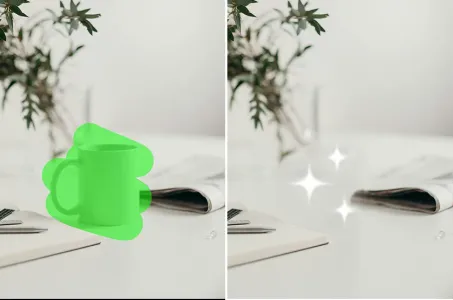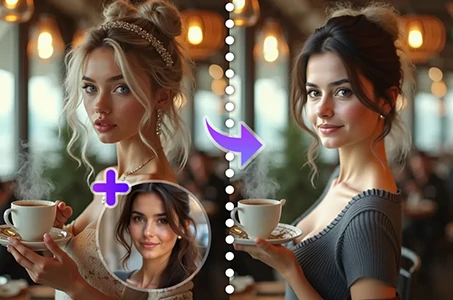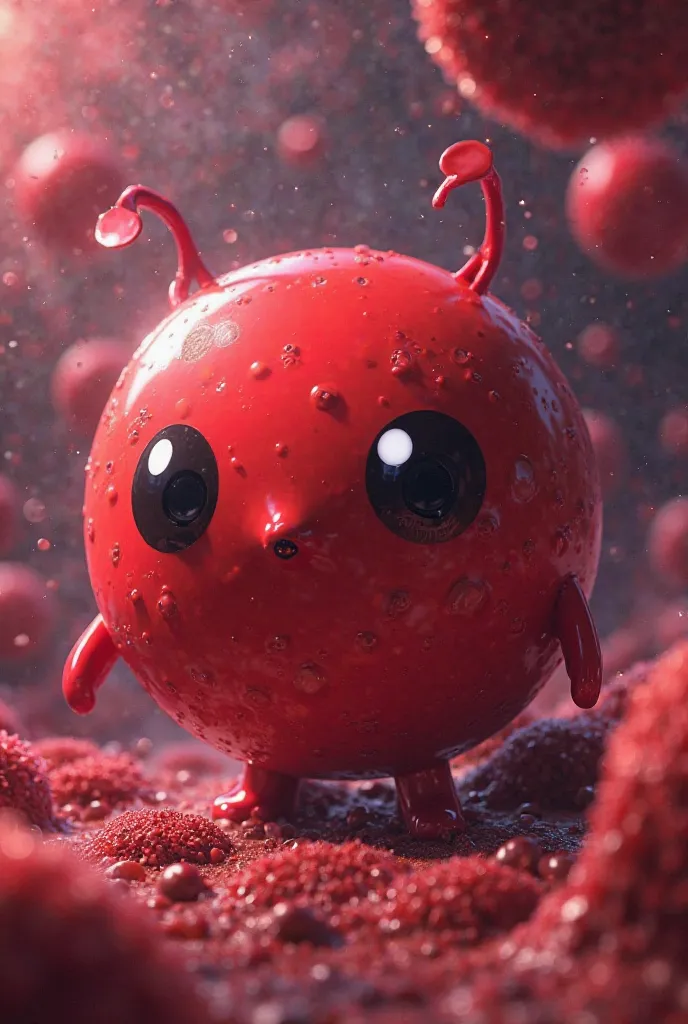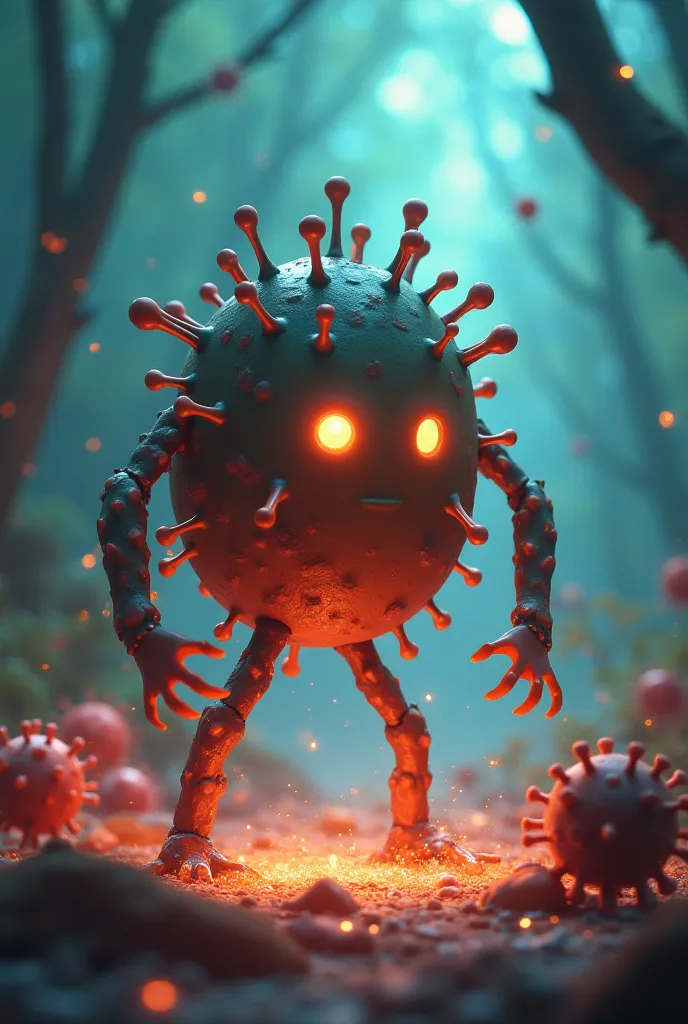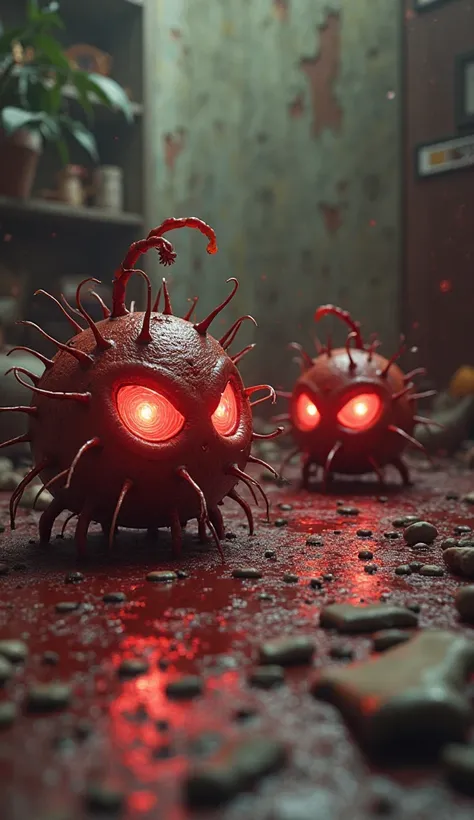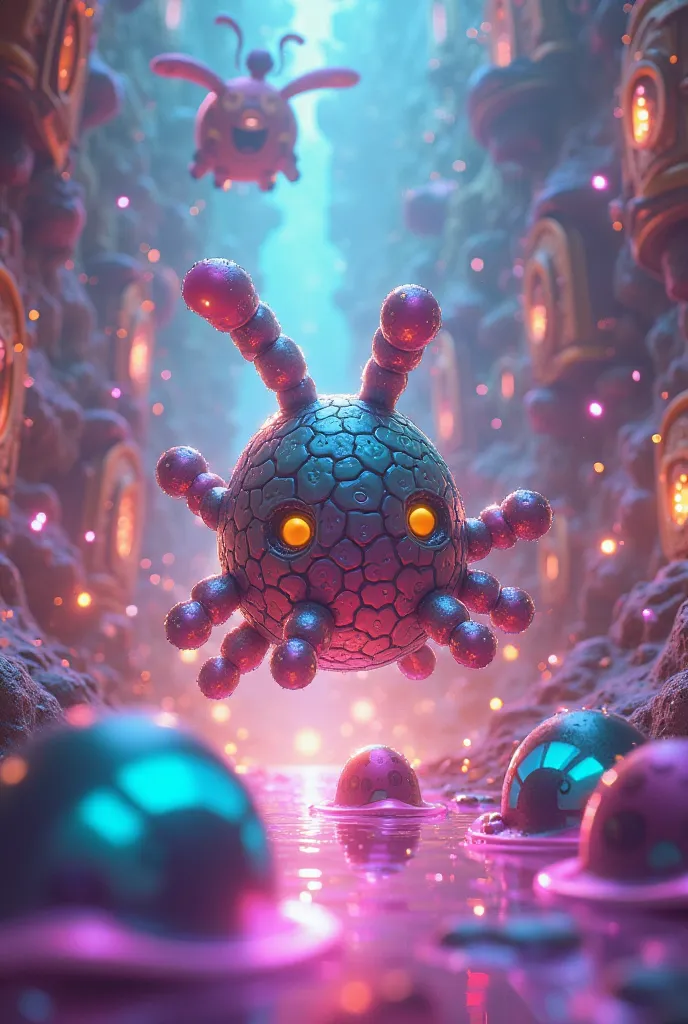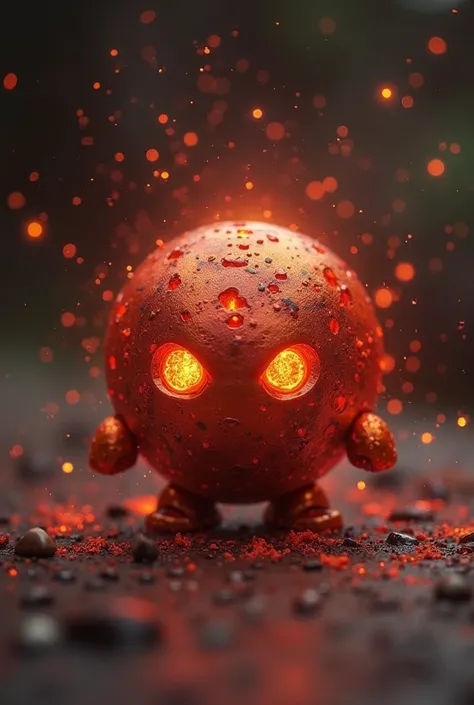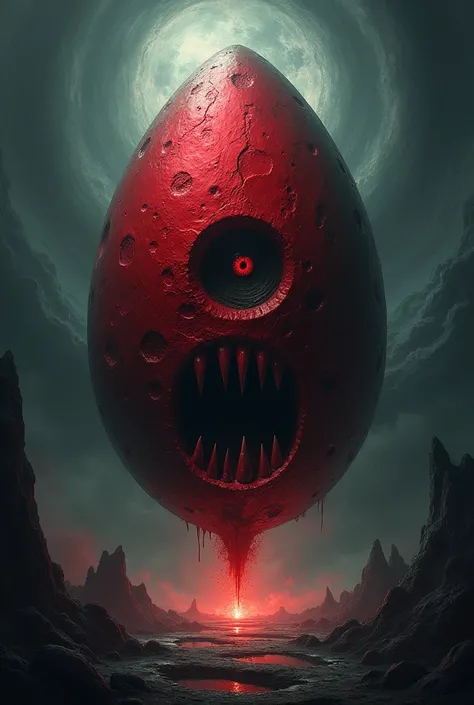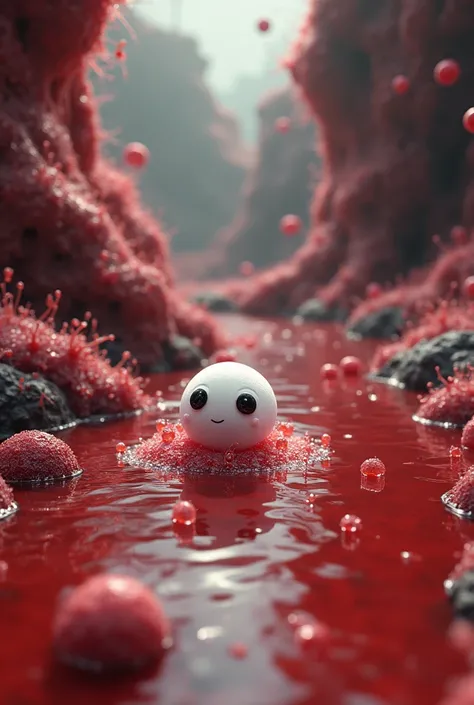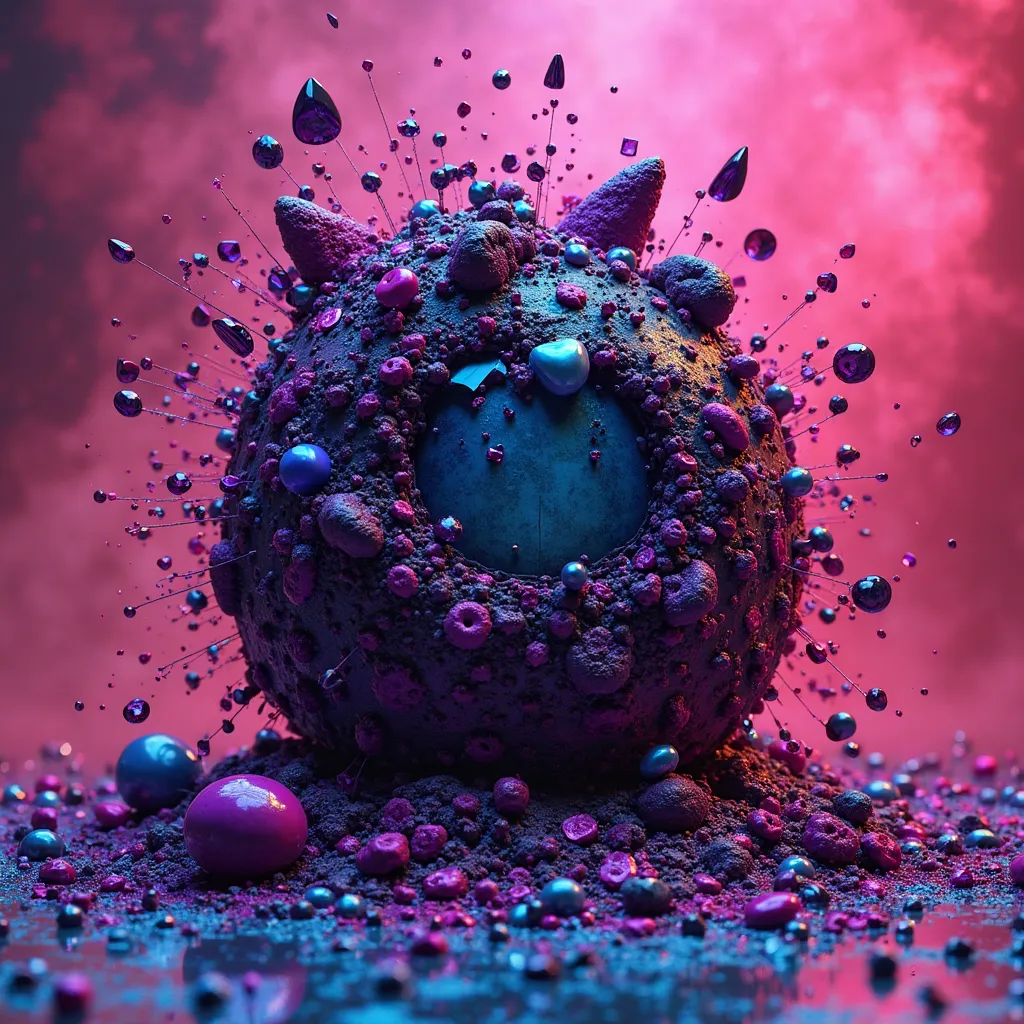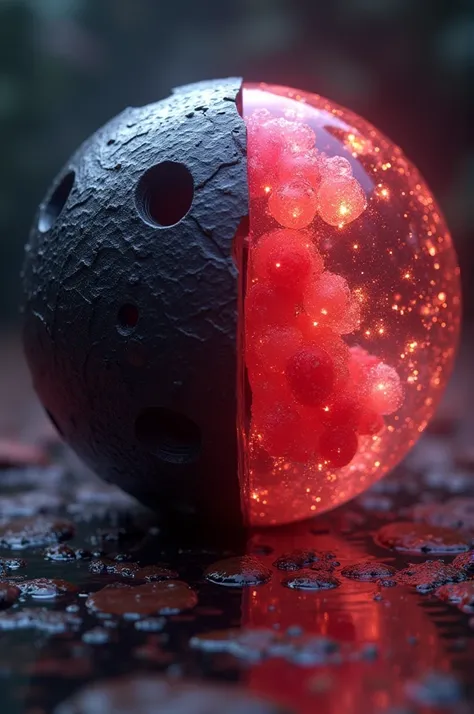The main scene is a bone marrow milieu, with a variety of cells represented

The main scene is a bone marrow milieu, with a variety of cells represented. However, the main focus is on Acute Myeloid Leukemia (AML) cells and their dynamic behavior. This dynamic behavior should be represented through a spectrum of colors: Red Glow AML cells for High mTORC1 Activity: AML cells with high mTORC1 activity should be painted with a vibrant, glowing red hue. These cells should appear energized, indicative of their high proliferation and survival rates. Yellow AML cells for Low mTORC1 Activity: These are AML cells that have reduced mTORC1 activity. They are presented with a mellow yellow color, to represent their less active state. Blue for Apoptotoc (dying) cells: AML cells undergoing apoptosis, symbolizing cell death, should be colored in a calming or cooling blue. The blue cells should also appear fragmented or 'bursting', indicating their imminent demise. Layout: The bone marrow environment should provide a deep, dark background to contrast and highlight these brightly colored cells. Ensure there is a mix of red, yellow, and blue cells scattered throughout the scene, conveying the intratumoral heterogeneity and microanatomical localization. The cells could be arranged in a way that suggests movement or flow, to give a sense of the dynamic nature of the process. To accompany this, a small legend should be provided at one corner of the image to explain the color-coding. The legend should be designed such that it is easily noticeable, but it should not detract from the main image. Remember, the goal of this image is to illustrate the dynamics of mTORC1 activity within the in vivo environment of AML. We want to draw attention to the constantly changing state of these cells, their activities, and their struggle for survival or surrender to apoptosis in a visually striking and informative manner.
Prompts
Copiar prompts
The main scene is a bone marrow milieu
,
with a variety of cells represented
.
However
,
the main focus is on Acute Myeloid Leukemia (AML) cells and their dynamic behavior
.
This dynamic behavior should be represented through a spectrum of colors:
Red Glow AML cells for High mTORC1 Activity: AML cells with high mTORC1 activity should be painted with a vibrant
,
glowing red hue
.
These cells should appear energized
,
indicative of their high proliferation and survival rates
.
Yellow AML cells for Low mTORC1 Activity: These are AML cells that have reduced mTORC1 activity
.
They are presented with a mellow yellow color
,
to represent their less active state
.
Blue for Apoptotoc (dying) cells: AML cells undergoing apoptosis
,
symbolizing cell death
,
should be colored in a calming or cooling blue
.
The blue cells should also appear fragmented or 'bursting'
,
indicating their imminent demise
.
Layout:
The bone marrow environment should provide a deep
,
dark background to contrast and highlight these brightly colored cells
.
Ensure there is a mix of red
,
yellow
,
and blue cells scattered throughout the scene
,
conveying the intratumoral heterogeneity and microanatomical localization
.
The cells could be arranged in a way that suggests movement or flow
,
to give a sense of the dynamic nature of the process
.
To accompany this
,
a small legend should be provided at one corner of the image to explain the color-coding
.
The legend should be designed such that it is easily noticeable
,
but it should not detract from the main image
.
Remember
,
the goal of this image is to illustrate the dynamics of mTORC1 activity within the in vivo environment of AML
.
We want to draw attention to the constantly changing state of these cells
,
their activities
,
and their struggle for survival or surrender to apoptosis in a visually striking and informative manner
.
INFO
Checkpoint & LoRA

Checkpoint
ReV Animated
0 comentario(s)
0
0
0






